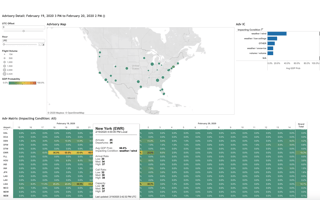It's sunny as you look out the airplane window, you check the weather at your destination and all...
How do Lumo's predictions work?

While we can't give away all the details of our secret sauce, here's an outline of the basic ingredients. Our predictions are based on a combination of machine learning models that analyze vast amounts of historical and forecast data, and a super-fast simulation that is able to simulate the impact of projected constraints on all flights in the world rapidly (in a few minutes).
The factors that go into our simulation depend on how far out the flight is.
More than a week before departure
If you were to query Lumo for the delay risk of a flight a month or two away, the predictions are based on
- Historical flight data, and patterns on delays by airline, day of week, time of day, etc.
- Seasonal effects
- Projected congestion based on published schedules
A few days to a week out
As we get closer to departure, we start using weather forecasts and any Air Traffic Control data we may think is relevant. The factors that go into our prediction include all the factors that went into the long-term prediction models, plus
- Weather forecasts (including aviation weather forecasts)
- Air Traffic Control information
- Event data, such as strikes
- Proprietary models on how delays might propagate, i.e., models that estimate the routing underlying the schedule
Hours to a few days out
Finally, we start layering in any real-time data to refine our predictions. Our short-term predictions include all the factors listed above, plus
- Real-time flight information on delays and cancellations
- Real-time weather, Air Traffic Control restrictions, and other events






